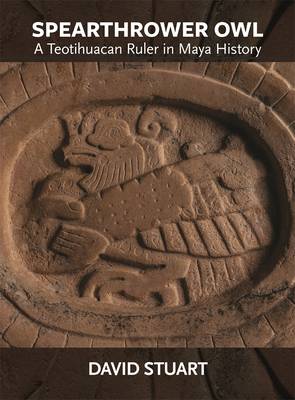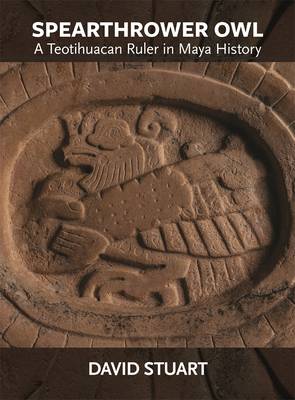
Bedankt voor het vertrouwen het afgelopen jaar! Om jou te bedanken bieden we GRATIS verzending (in België) aan op alles gedurende de hele maand januari.
- Afhalen na 1 uur in een winkel met voorraad
- In januari gratis thuislevering in België
- Ruim aanbod met 7 miljoen producten
Bedankt voor het vertrouwen het afgelopen jaar! Om jou te bedanken bieden we GRATIS verzending (in België) aan op alles gedurende de hele maand januari.
- Afhalen na 1 uur in een winkel met voorraad
- In januari gratis thuislevering in België
- Ruim aanbod met 7 miljoen producten
Zoeken
Omschrijving
Nearly twenty-five years ago, David Stuart published an article titled "The Arrival of Strangers," in which he proposed that "Spearthrower Owl," a prominent historical figure cited in the Early Classic inscriptions of Tikal, might be a ruler of Teotihuacan. Stuart expands on this provocative argument in Spearthrower Owl: A Teotihuacan Ruler in Maya History, offering evidence that Spearthrower Owl was a historical individual whose political legacy reverberated for generations in the Maya Lowlands and Central Mexico. Many of the epigraphic, iconographic, and historical particulars surrounding his life are presented here for the first time; these varied lines of evidence point to him being a powerful foreign individual in the history and dynastic politics of the Maya Lowlands as well as a ruler of Teotihuacan from 374 to 439 CE. To contextualize this examination of Spearthrower Owl, the volume looks more closely at the Entrada of January 16, 378, especially in light of newer archaeological discoveries, epigraphic readings, and historical interpretations. The resulting historical framework, even vague as it sometimes is, highlights the complexity and nuance of the Teotihuacan-Maya relationship in the Early Classic period.
Specificaties
Betrokkenen
- Auteur(s):
- Uitgeverij:
Inhoud
- Aantal bladzijden:
- 168
- Taal:
- Engels
- Reeks:
Eigenschappen
- Productcode (EAN):
- 9780884025023
- Verschijningsdatum:
- 2/04/2024
- Uitvoering:
- Paperback
- Formaat:
- Trade paperback (VS)
- Afmetingen:
- 193 mm x 267 mm
- Gewicht:
- 476 g

Alleen bij Standaard Boekhandel
+ 180 punten op je klantenkaart van Standaard Boekhandel
Beoordelingen
We publiceren alleen reviews die voldoen aan de voorwaarden voor reviews. Bekijk onze voorwaarden voor reviews.









